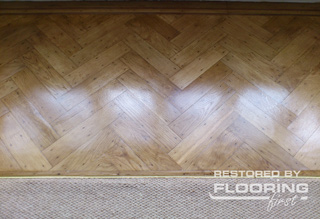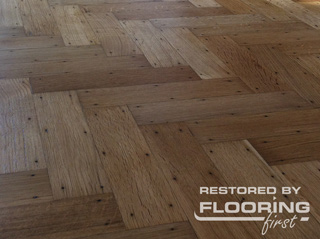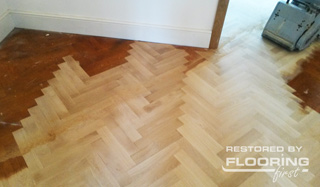Back to Parquet Restoration
Parquet Floor Sanding - Effective Methods And Tips
 Parquetry certainly has its charm. It is a bit different from any other kind of hardwood flooring. Why it is so, you ask? Even today, wooden floors are associated with luxury. They are expensive, durable and long-lasting. And they always were. Parquets, however, are something else. For centuries they have decorated the homes of the rich and the powerful, those with wealth and high social standing. Creating and fitting a parquet was a process involving a lot of hard work and not a small bit of imagination.
Parquetry certainly has its charm. It is a bit different from any other kind of hardwood flooring. Why it is so, you ask? Even today, wooden floors are associated with luxury. They are expensive, durable and long-lasting. And they always were. Parquets, however, are something else. For centuries they have decorated the homes of the rich and the powerful, those with wealth and high social standing. Creating and fitting a parquet was a process involving a lot of hard work and not a small bit of imagination.
Due to the delicate nature of this particular type of wood flooring, it’s restoration takes a bit more attention to be performed properly. One of the questions upon which even some experts cannot agree on is just how to properly sand a parquet. Let’s see why.
Sanding with the Grain
 The most important thing when doing anything, not just floor restoration, is knowing why you have to do it in a certain way. Don’t just blindly follow what someone tells you to do but try to find out the reasoning behind it.
The most important thing when doing anything, not just floor restoration, is knowing why you have to do it in a certain way. Don’t just blindly follow what someone tells you to do but try to find out the reasoning behind it.
Let's begin with the basics. What is wood grain? According to Wikipedia, the grain of the wood is the 'longitudinal arrangement of wood fibres or the pattern resulting from this'. To put it in another way, wood consists of cells which follow a certain direction. These cells form the grain. If you attempt to sand in the opposite direction, you will damage the floor which will make the sanding counterproductive. Therefore, the golden rule of floor sanding is to do your best to follow the grain. This isn’t hard when it comes to most types of wood flooring. However, parquetry isn't 'most types'. Parquets consist of many wooden blocks arranged in certain patterns which often face different directions. This means that there is no way whatsoever to strip the blocks and follow the grain the entire time. Still, there are ways to go around this and here comes another question - how?
Parquet Floor Sanding, Diagonally or Straight and Across?
There is a bit of controversy what is the best way to sand a parquet - straight and across or diagonally. Here we will try to analyse the two methods to see how each works. We shall take, for example, the most popular type of parquet – herringbone. When each side of the blocks is facing the opposite direction, how do we strip that?
Straight and across. Some flooring experts believe this is the proper way to strip a floor because there is less abrasive scratching. While you do not sand completely with the grain when going straight, you also do not go completely against it when moving across. People who use this method claim this means that all blocks are being sanded more or less equally. According to them, since wooden blocks have different densities, a diagonal sanding will allow the machine to pass over a certain block for a precious moment which will be enough to remove a bit too much from the particular piece. Naturally, this will make such low-density blocks uneven and flawed.
Diagonally. Truth be told, flooring experts rarely go for diagonal sanding. It is a very aggressive way to strip a floor and often leaves cross-grain scratches. It is a method used for very uneven or dirty floors which need an extra force applied. However, parquets are different. As we already said, no matter what you do, you cannot follow the grain of both sides of parquet blocks. The idea with diagonal sanding is that you simply shouldn’t attempt to. You can strip the surface straight and across when doing rough and medium runs but when it comes to fine sanding – diagonal all the way! Sanding at least once in each diagonal will allow all the blocks to receive the same treatment. All of them will be stripped once opposite and once by following the grain. This is the method our company uses and we consider it better than the ‘straight and across’ alternative.
When it Comes to Fine Sanding and Buffing
There are pieces of equipment created for specific purposes. Products like the Lagler Trio and the Bona FlexiSand are machines mostly used for buffing. Their design makes them unsuitable for rough sanding because the floor must be well levelled to use them. However, if the floor is relatively even, this equipment can help smooth the surface of the parquet to a very high standard with little effort. If you wonder, if our company uses those – Yes, we do!
Regardless of how you decide to proceed with the restoration of your wooden floor, you better keep in mind just one thing. You should always know what you are going to do and how to do it. Plan ahead. If you have any difficulties our team will be glad to assist you.